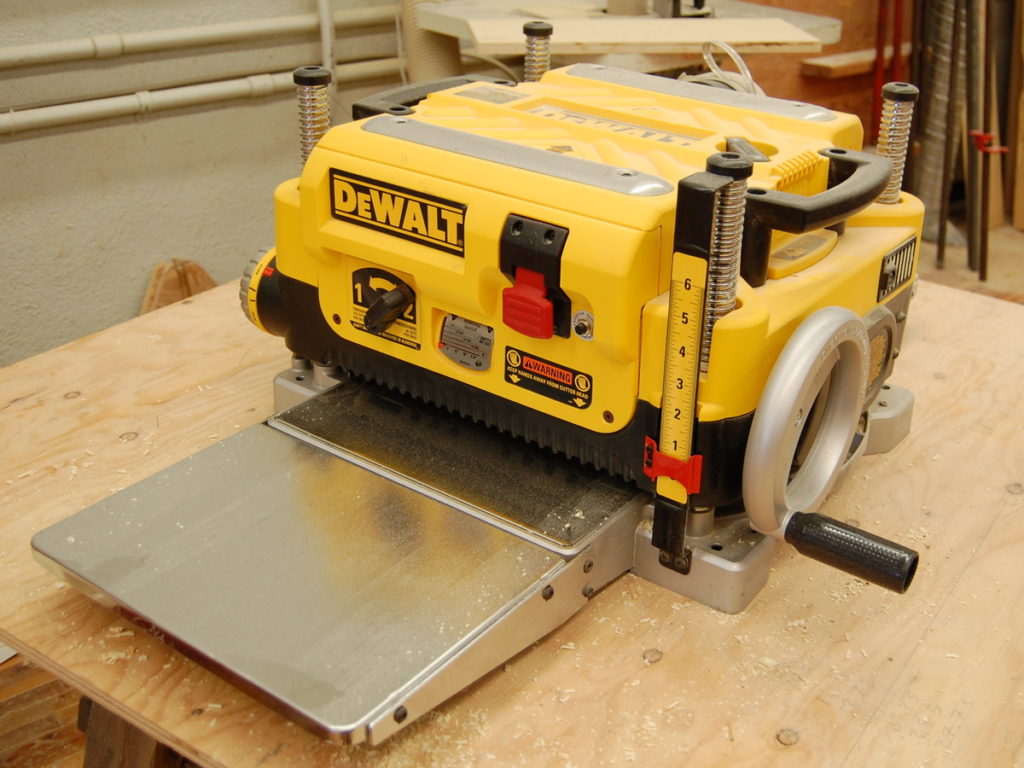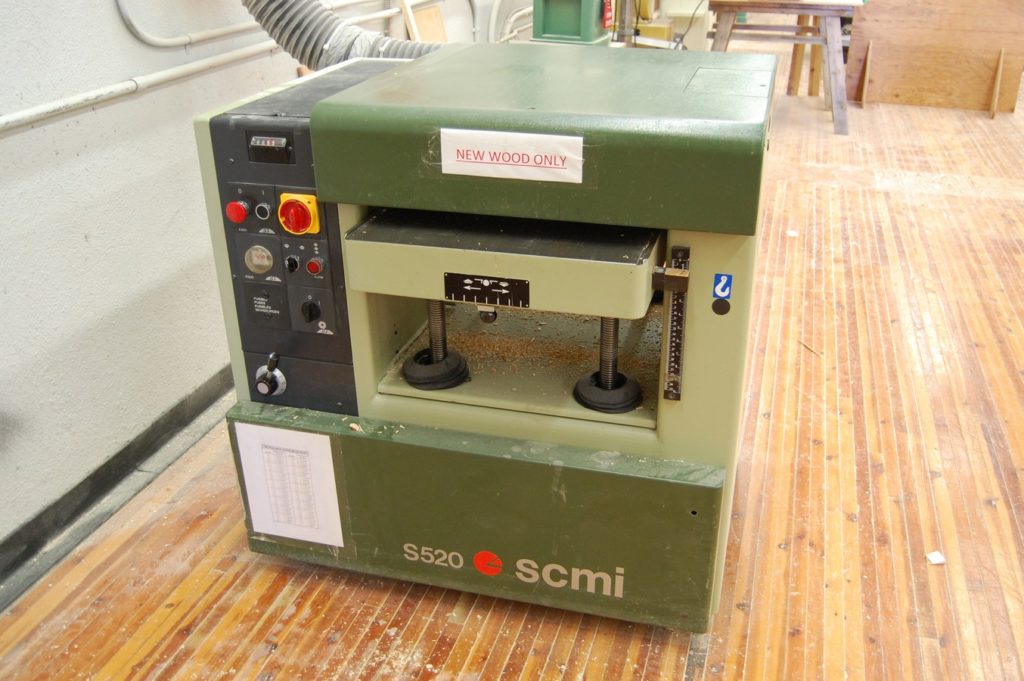Thickness Planer
Like the jointer, the thickness planer is used in the initial stages of machining solid wood. It, along with the table saw and jointer are used to process rough lumber flat, straight, and square. The planer is used to machine wood parallel and to consistent thickness. It should be used after the stock has had a reference surface flattened on the jointer. Single surface planers remove material on one face at a time Stock is fed into the planer with the jointed surface face down on the table. The cutterhead is parallel to, and positioned above the table and cuts the opposite face. In this way, material that is fed into the planer exits the machine with two parallel faces.
It is important to note that the thickness planer does not flatten the stock, it simply makes two faces parallel and a consistent thickness. Material fed into the planer that is bowed or twisted will retain this defect, although the face will appear smooth. The jointer and planer are designed to work together to accurately machine solid wood flat, straight, and square.
Single surface planers are common in most woodworking shops. In industrial production, double surface planers remove material from the top and bottom of the stock in one pass, and 4 or 5 head moulders process rough stock in a single process that eliminates the need for separate ripping, jointing, and planing processes.
The size of a planer is indicated by the length of its cutterhead. For example, a 15″ planer has a maximum width of cut of 15″. The other capacity in a planer is the maximum cutting thickness.
Types of single surface planers
There are three main types. Small, portable planers have universal motors that turn at high speeds and produce a fine finished surface. They commonly have indexing, disposable knives, and take only small amounts of material in a single pass. They usually have a 12″-13″ cutterhead.

Stationary planers have a larger cutting capacity, from 12″ to 20″, and can handle larger, heavier stock. They can remove a greater amount of material in a single pass, and may have variable speed feed control. Feed speed control is the ability to change the speed that the stock is fed through the machine. It is often specified in feet per minute.

Industrial planers have cutterheads from 20″ and up. They can take very heavy passes and have a greater range of speed feed control.

a type of electric motor that can operate on either AC or DC power and uses an electromagnet as its stator to create its magnetic field. Characteristics are high starting torque, they can run at high speed, and are lightweight and compact. They are commonly used in portable power tools and equipment, such as routers and mitre saws.

